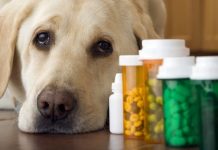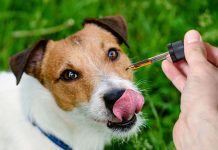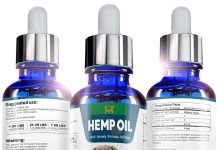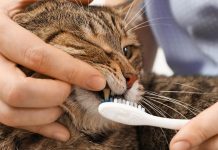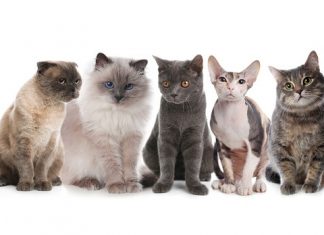Protein, close by fats and carbs, is one of the three huge macronutrients required by each cell of the human, canine, and feline body. This supplement is required in different totals depending upon the species. In this article, we’ll look at why protein is critical, inspect requirements for canines and cats, post sources, and observe the ramifications of overflows and deficiencies.
What Is Protein and Why Is It Important?
Protein is maybe the principal part of the body. It is expected to create muscle, fix cells, support the immune system, and help us (and pets) feel fulfilled. Protein controls the body as it is ready. Additional benefits join helping assimilation, helping with staying aware of weight decrease, keeping a strong heartbeat, and supporting bone prosperity.
Proteins are made from amino acids, which are normal blends that contain carbon, oxygen, nitrogen, and hydrogen. The body requires 22 amino acids. Of these, cats can convey 11 and canines make 12.
The other 10 or 11 amino acids should be upgraded in food, and consequently are called central amino acids.
These basic amino acids are:
Arginine
Histidine
Isoleucine
Leucine
Lysine
Methionine
Phenylalanine
Taurine (in cats figuratively speaking)
Threonine
Tryptophan
Valine
Other than the way that cats require more protein, a catlike’s necessity for taurine is a critical clarification that cats can’t eat canine food.
Necessities for Cats and Dogs
The proportion of protein required contrasts with the species, practice level, uneasiness, life stage, regenerative cycle, stowed away sickness, and overall body condition. Pets that consume more calories or exhaust extra energy demand more protein. For example, working canines or canines that movement often need more protein to give them the parts essential for energy creation. Pets at different life stages (puppy or little feline, grown-up, or senior) require different proportions of protein, with more expected during seasons of advancement. There are additional energy necessities during pregnancy or lactation and with cleared out or disabled pets. In spite of what may be generally anticipated, a few diseases, similar to kidney contamination, may require lower dietary protein totals.
Despite protein, canines and cats require water, fats, carbs, supplements, and minerals. A first-class changed eating routine is fundamental for OK prosperity. While buying pet food, pick a food guaranteed by the Association of American Feed Control Officials (AAFCO). This affiliation endeavors to ensure that canine and cat food sources are done and changed. Get comfortable with the healthy necessities of canines here and cats here.
If all else fails, canines need about half as much protein as cats. Cats are carnivores and require more protein than canines, who are omnivores.
Protein needs can be resolved in several different ways:
By Weight
Canines – Dogs need around 1 gram of protein for each pound of ideal body weight. For example, a 25-pound canine of an ideal weight would require 25 grams of protein every day. Of course, a 50-pound overweight canine that should be 40 pounds would require 40 grams of protein every day.
Cats – Cats need around 2 grams for each pound of ideal body weight. For example, a 10-pound cat of an ideal weight would require 20 grams of protein every day.
By Growth Needs
Canines – generally speaking, most canines need around 18 to 25% protein.
Pup – 28%
Grown-up – 18% to 20%
Senior – 18%
Working canine – 25 to 35%
Pregnant or nursing – 28%
Cats – when in doubt, most cats need 35 to 45% protein.
Feline – 40 to half
Grown-up – 35 to 40%
Senior – 35 to 38%
Pregnant or nursing – 45 to half
Figuring Requirements
To figure out protein needs, follow these methods:
Check your pet. For this model, could we envision we are evaluating the protein expected for a 25-pound canine? Consider in the event that your pet is overweight and what their ideal weight should be.
Conclude the sum you are dealing with. This is much of not entirely set in stone in grams.
One ounce of canned food contains around 30 grams. Thusly, a 5.5-ounce can be around 165 grams and an 8-ounce can would be around 240 grams.
Dry food is to some degree harder to change over to grams, since it is assessed by volume rather than weight. If possible, measure the step-by-step piece of your canine’s food on a kitchen scale. One cup of dry food can contrast from 80 to 120 grams.
Scrutinize the pet food name to conclude the base degree of protein dealt with or can. You can similarly get this information from the pet food maker’s site.
Do the math. Increment the grams of what you feed by the protein rate in the food.
For example, if you feed a total of one 8-oz container of canine food (240 grams) every day and the food says it contains 10% protein, increment 240 grams x 10% (0.10) protein to get 24 grams of protein every day. For a 25-pound canine, that is simply right on target.
As another model, on the off chance that you are dealing with 1/4 cups of dry food that contains 20% protein and each cup is 100 grams then 100 grams x 1/4 cups = 125 grams x 20% protein (0.20) = 25 grams of protein.
Right when Pets Get Too Much Protein
Superfluous protein ingestion can incite weight. This is a marvelous issue since protein is maybe the most exorbitant trimming in pet food assortments and, therefore, most pet food sources associations give exactly what is required.
NOTE: Obesity is an average issue, yet more consistently achieved by glutting and nonattendance of action. Concentrate on Obesity in Dogs.
Exactly when Pets Get Too Little Protein
Protein need can provoke issues, for instance, poor muscling, regurgitating, detachment of the entrails, weight decrease or weight obtain, social changes, and failure to create or prosper. Cats require amino acids from animal proteins. The absence of taurine and arginine can cause genuine eye issues, neurological irregularities, and perilous coronary sickness.
Wellsprings of Protein
There are numerous wellsprings of protein and, specifically, a qualification in the idea of proteins. Some protein sources, for instance, plant-based protein sources, don’t contain all of the amino acids that are crucial for cats. Phenomenal meats, similar to chicken, burger, pork, bunny, duck, and fish, are significantly eatable and contain crucial amino acids.
Proteins are evaluated subject to their normal worth (limit of the protein to be isolated by the body). The better the body can isolate a protein, the pervasive the normal worth. For example, proteins with the most significant normal worth are burgers, chicken, and sheep muscle meat. Lower on the once-over is fish dinner and organ meats, followed by soybeans, corn gluten, wheat, and rice protein meals or concentrates.
Will Pets Be Allergic to Protein?
Canines and cats can be oversensitive to various proteins. Food responsive qualities can cause annoying skin, going bald, scaling, ear infections, skin pollutions, regurgitating, runs, and weight decrease. The most broadly perceived sources that cause hypersensitivities are chicken, meat, fish, eggs, and milk. Get to know food hypersensitivities in canines and cats. If your pet has incidental effects that you acknowledge could be from an awareness, see your veterinarian for the proposition.
In occurrences of food awarenesses, a normal idea is to deal with a limited fixing diet, similarly suggested as an “end diet,” that incorporates dealing with without the fixing you are endeavoring to avoid for a range of 2 to 90 days. The goal is to pick a protein source that your pet has not been introduced to and, thusly, doesn’t have an aversion to. There are numerous associations that make particularly stunning food assortments with trimmings like sheep, rabbit, catfish, trout, goat, duck, venison, and even kangaroo.
One more decision for dealing with food awareness is a hydrolyzed protein diet. This suggests the protein, which can be from an average source like chicken or cheeseburger, is changed so the body doesn’t recollect it and actuate an overly sensitive reaction.
Views: 10



